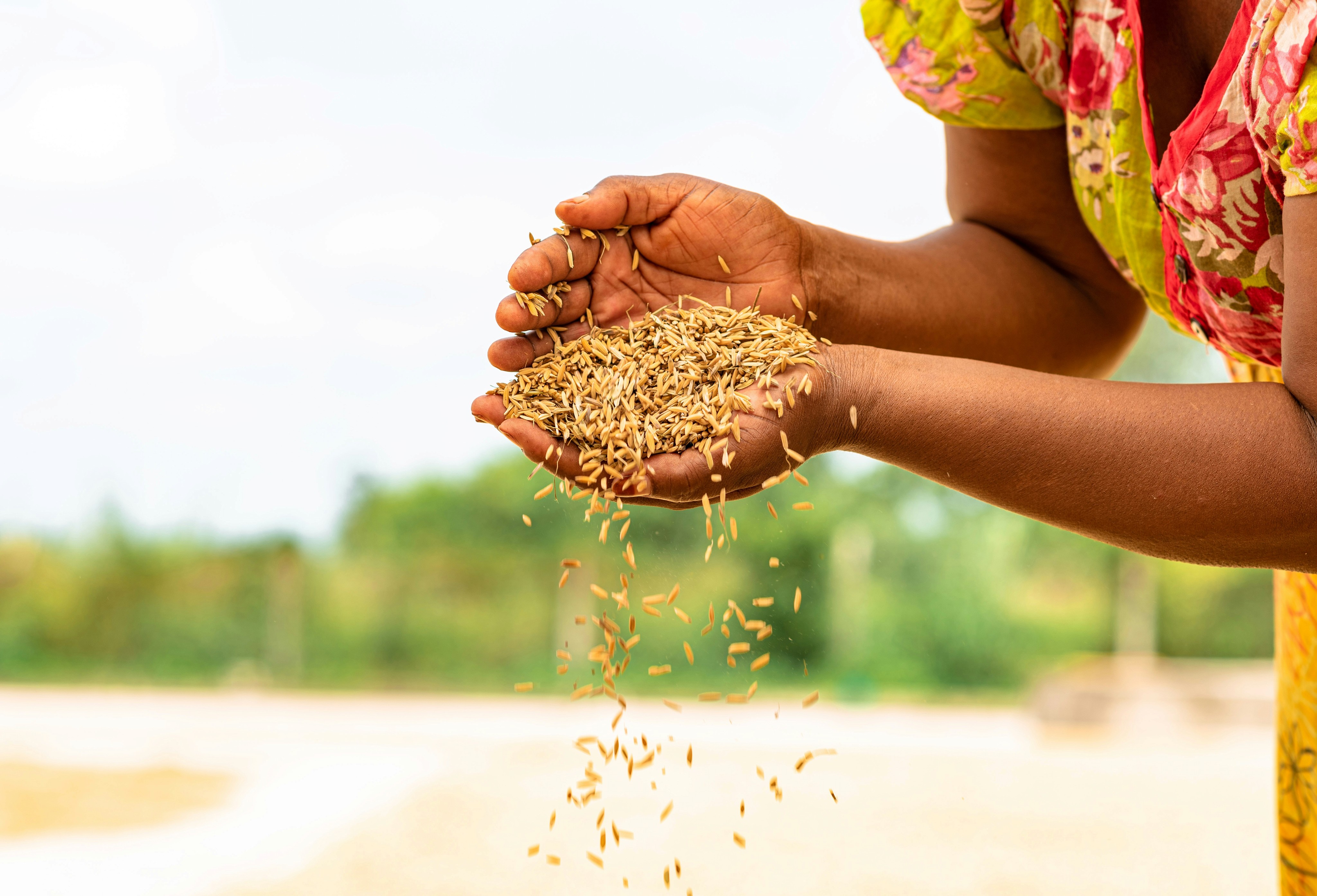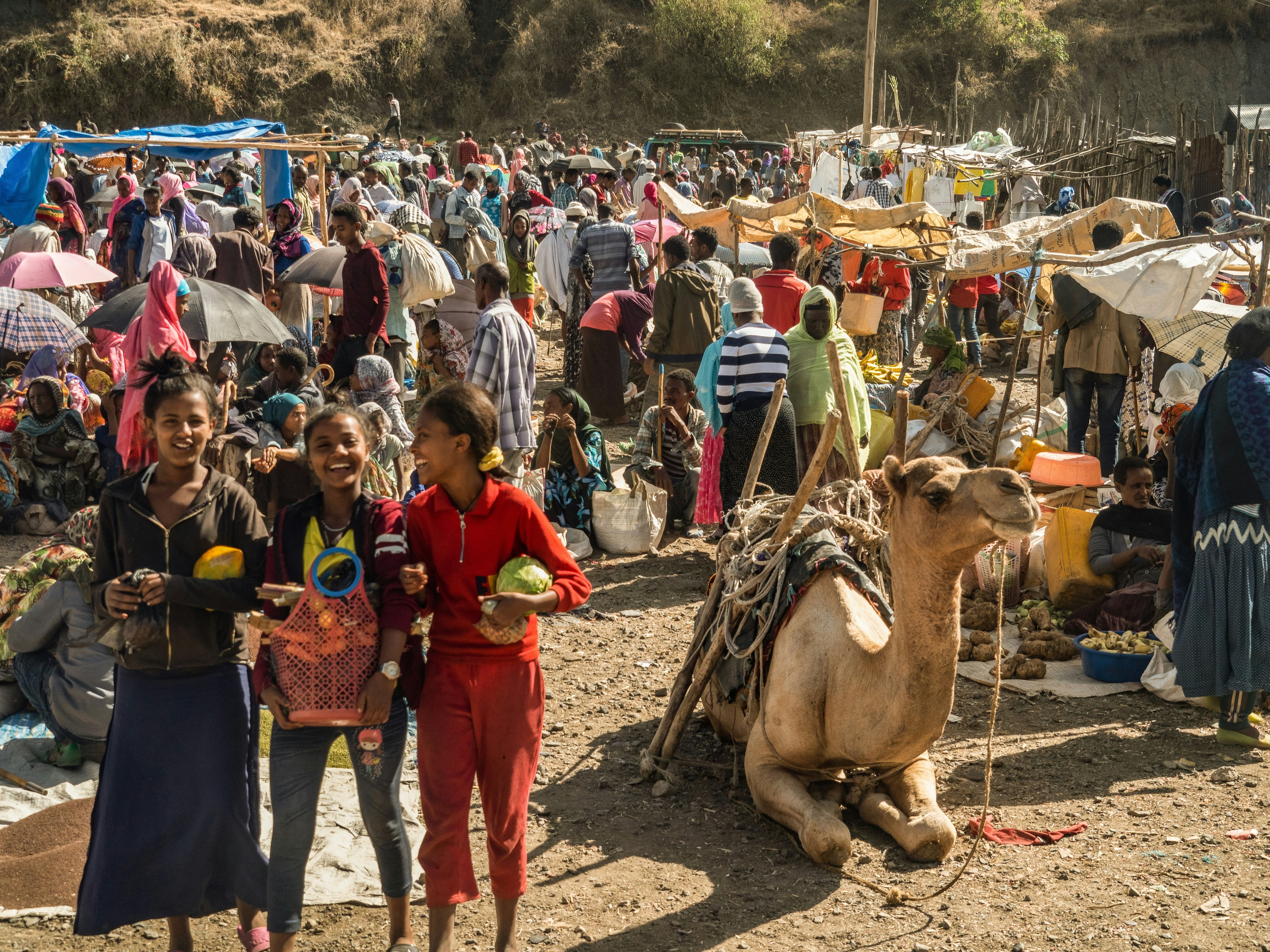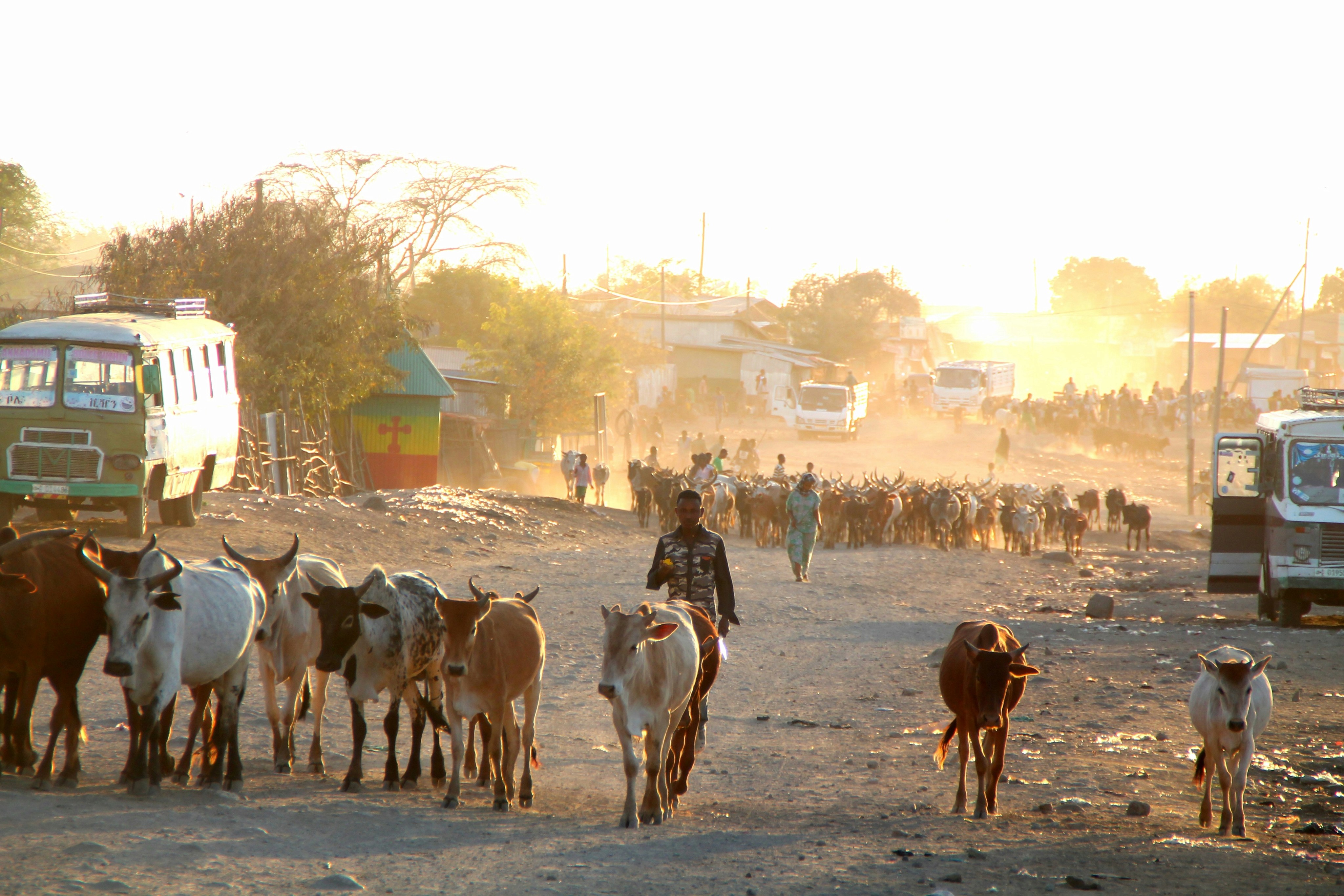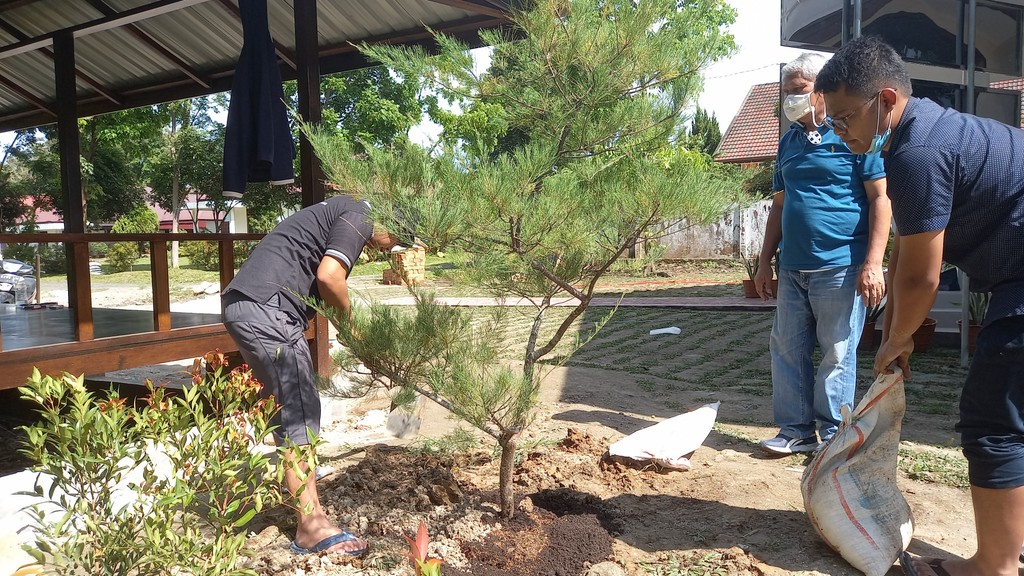Compilation of Climate Justice Advocacy
Good Practices of Local to Global Action
PROJECT DURATION
1 January 2018 to 31 December 2020.
BUDGET AND FUNDING
EUR 900,000 Icelandic Church Aid and the Ministry of Foreign Affairs Iceland
IMPLEMENTATION
The Lutheran World Federation, Ethiopia World Sevice COuntry Program
SNAPSHOT
The Kebribeyah Sustainable Livelihood Project was desgined to address adaptation and mitigation to climate change. The project focused on several water, health, and sanitation areas, such as awareness sessions, latrine and birka installation. The project has increased agricultural productivity, benefiting nearly 1,000 farming households, and promoted environmental sustainability through the adoption of appropriate technologies. It has empowered women, expanded access to water and sanitation, and promoted the production of environmentally friendly household energy sources.
In an arid climate zone, with a high population proportion being agropastoralists who rely mainly on livestock and agriculture, the project was highly relevant as it focused on inhibiting further degradation of the local ecosystem, restoring the overall ecological conditions of the area, and increasing the resilience and adaptive capacity of the targeted communities in Kebribeyah District, Fafan Zone, in the Somali region.
Its main objectives were:
1. To achieve food security among vulnerable target households through the promotion of improved and eco-friendly agricultural technologies, such as sustainable natural resources conservation (NRC).
2. To empower women to have their own businesses and become less dependent on agriculture, “so they depend less on the rain and are less affected by climate hazards.” (Ibrahim Abdelkadir, Senior Program Officer for Food Security and Livelihoods, The Lutheran World Federation Ethiopia).
3. To reduce incidences of waterborne diseases among the target households.
Context
The Somali region falls into the arid and semiarid agroecological climatic zone. It is one of the four regions of Ethiopia, and it is considered as the least developed of the country. It is also the most vulnerable region to drought effects due to the dominantly arid and semiarid agroecology and it is characterized by erratic and unreliable rainfalls.
The predominant livestock economy depends mainly upon herding with a primary stock of camels, flocks of sheep, goats, and cattle coupled with crop production in some parts of the area where conditions are favorable.
Due to the inability to attain food self-sufficiency, a large part of the region’s population is perennially dependent on relief assistance. Although most of the people of the region mainly earn their livelihood from livestock, they practice crop production as well.
The major crops cultivated in the region are sorghum and maize. Wheat and barley are also harvested in a smaller amount each year. Commercial activity is another occupation that is significantly exercised in the region.
Inadequate basic infrastructures and external factors such as drought constitute formidable constraints for the region. Low and erratic bimodal rainfall and generally high temperatures are the other characteristics of the region that have contributed to the widespread shortage of water in the region as a whole.
The region in general is characterized by chronic food insecurity problems as almost all of the districts are covered by the Productive Safety Net Programme (PSNP) and food aid programs.
Eighty percent of the people in the Kebribeyah district are agropastoralists and depend, in addition to livestock, on farming activities from maize, sorghum, and wheat. Additionally, onion, tomato, and watermelon are the major fruit and vegetables produced in the district. However, according to the district administrator, as the farming is rain-irrigatedfed, the sector is frequently hit by the recurring drought and the production drops continuously from year to year.
Animal disease outbreak, which is very common in the area, is the other bottleneck for the development of the subsector. The subsector in the district is characterized by a high prevalence of livestock disease and inadequate veterinary services.
Currently, although there are Community Animal Health Workers (CAHWs) assigned in each of the six target kebeles (at least two in each), their services are not visible, as reported by the focus group discussion participants, and the major constraint behind is that they have a critical shortage of drugs and essential treatment equipment. Animal disease has numerous negative impacts in the area including a reduction in the productivity of herds due to increased death of animals, weight loss, and retarding growth.
Erosion and gullies are the most common environmental challenges that the community faces when practicing farming and the community indicated that their knowledge of environmental protection and management is very limited. The rural open lands are covered by shrubs and bushes that usually wither during the dry season in the absence of rain.
According to the needs assessment, tree planting is not at all practiced in the district both due to low awareness level about the relation between trees and the environment and also because of an absence of tree seedlings.
The predominantly agropastoralist rural people of the district rely mainly on birkas (ponds) for water. The boreholes are found around towns and water supply is always a concern for the district population mainly because it depends on the rain.
As drought is a common phenomenon in the district, water scarcity becomes the most critical problem during dry seasons and is exacerbated during drought, affecting mainly the agricultural sector that practices rain-fed agriculture, as is the case in the six targeted kebeles.
Although it is difficult to back up with clinical data due to the absence of information, the community responses indicated that waterborne diseases are common in rural areas and the application of water treatment chemicals is almost non-existent due to both low awareness levels and limited access.
The district’s average water supply coverage is reported to be 61% which also took account of surface water harvesting structures that are not safe. So, it is easy to generalize that the safe water supply coverage of the district is much lower than what is reported by the district water, mineral, and energy office.
Community education, sensitization, and capacity-strengthening for adaptation and resilience
The project intervention focused mainly on serving natural vegetation and trying to train the community in doing more conservation practices, conservation techniques, conserving land, and improving their farming skills and water harvesting.
To introduce post-harvest technology and to minimize the losses after harvest, the project procured eight motorized maize shellers and provided them to eight groups in seven kebeles on revolving funds. Each group, consisting of 20 members (including both men and women), provided later the service to other farmers, and the income was used for repayment.
Likewise, and to minimize open defecation in the kebeles, the project constructed nine dry pit latrines in Hare, Gumer, Kebrihanten, Duriya, and other kebeles for communal use. Part of the pit excavation was carried out with community participation. Open defecation has a profound impact on various aspects, including land, water, air, plants, and animals.
The odors emitted during this process contribute to air pollution, affecting people’s health when they breathe them in. Moreover, it has detrimental effects on the environment as it introduces toxins and bacteria into the ecosystem beyond its capacity to handle or decompose. Consequently, this leads to the accumulation of filth, and the excessive presence of microbes can eventually reach aquatic systems, posing a threat to life.
A women-savings and credit associations group was established, where women were supported by experts in developing their own business plans and receiving a loan. Beneficiaries were expected to repay the borrowed amount, ideally within one year, and the repaid funds were then passed on to another beneficiary.
“It is important to note that the most adversely affected by climate change are women. When a natural disaster occurs, men often leave first, leaving women behind.” (Ibrahim Abdelkadir, Senior Program Officer for Food Security and Livelihoods, The Lutheran World Federation Ethiopia).
This loan system significantly enhanced the economic and social status of women and has been
“a good way of climate impact mitigation, as women have been engaged in business and off-farm activities, so they depend less on the rain and are less affected by climate hazards. Moreover, they have been trained in the benefits of using fuel-saving stoves and enhanced their capacities in stove-making, using local materials like termite mound soil, which, as mentioned above, have impacts in CO2 reduction.” (Ibrahim Abdelkadir, Senior Program Officer for Food Security and Livelihoods, The Lutheran World Federation Ethiopia).
Similarly, the project planned and organized a farmer’s field day on soil conservation and agroforestry practices, and improved poultry production on model farms. The field day was organized in collaboration with the Somali Regional Research Institute. The second field day was held at the demonstration site in the Fafan research center, where 77 people (67 male and 10 female) participated in the event, comprising 60 farmers and 17 government sector office staff.
Finally, three three-day trainings on natural resources protection, conservation practices, management, and control measure techniques were provided to 170 people (129 men and 41 women) in collaboration with the district agriculture office.
Biodiversity conservation
Several soil and water conservation methods were introduced to combat land degradation, such as soil bund, which, “according to WFP (2005), is effective in controlling soil loss, retaining moisture, and ultimately enhancing the productivity of land,” cut off the drain, and land closure.
“For developing nations, soil erosion is among the most chronic environmental and economic burdens. The rates of soil erosion in Ethiopia are frighteningly high. Serious erosion is estimated to have affected 25% of the highland area. Close to 4% of the highlands are now so seriously eroded that they will not be economically productive again in the foreseeable future.” (Source: Damtew, Maru, and Adane, "Determinants of Adopting Techniques of Soil and Water Conservation," 196).
During the project, 5.7km of soil bunds or terracing to minimize water erosion have been built in Hare and Kebrihantin kebeles with the participation of 82 farmers, and two kilometers in Duriya, where 57 farmers, of which 15 were female, participated. In Ethiopia, soil erosion is considered a critical constraint for land resource productivity.
Following a top-down approach, soil water managing methods have been promoted according to the land’s physical restrictions and erosion hazards. These interventions, often implemented at the water catchment level, are intended to promote community labor mobilization.
In recent years, climate-smart agriculture has arisen as an approach whose objective is to combine climate change into the planning and implementation of sustainable agricultural tactics.
On the other hand, contour bunds are a simple agronomic measure that consists of plowing and planting across the field slope so that it matches contour lines.
The procedure does not lead to modifications in the slope profile and can be repeated each cropping season. Despite novel research conducted in Ethiopia providing evidence that terraces have a bigger potential to help farmers deal with current climate risks, it also highlights the positive effect of contour bunds on water utilization and soil conservation.
Moreover, the project constructed 126 m3 of cut-off drain in Duriya and Hare kebeles, with around 86 community members, of which 22 were women. The farmers constructed these drains to prevent the loss of seeds, fertilizers, manure, and soil due to water flowing onto the plot from uphill, as the excess water is disposed away from the field.
Furthermore, in consultation with the target community selected, the project delineated and enclosed four hectares of degraded and marginalized land in Hare, Gumer, and Duriya kebeles.
This practice aimed to inhibit further degradation of the local ecosystem, advance revegetation and forest regeneration, and restore the overall ecological conditions of the area. This was done by the area closure from interference and damage by both humans and animals to allow for the natural regeneration of the land.
Finally, 15 groups comprising 150 members (16 men and 134 women) were organized, trained, and equipped with materials for producing fuel-saving stoves, namely, molds, shovels, spoons, and jerrycans.
“Research has shown that compared with the traditional open fire tripod, fuel saving stoves could reduce household’s fuelwood consumptions, which could translate into potential emissions reductions of CO2.” (Source: Yibeltal T. Wassie and Muyiwa S. Adaramola, "Analysis of Potential Fuel Savings, Economic and Environmental Effects of Improved Biomass Cookstoves in Rural Ethiopia," Journal of Cleaner Production 280, Part 1 (2021).)
Local to Global to Local Approach
“We collaborate closely with local and district-level government authorities. In response to the ever-changing dynamics of climate change, we actively seek knowledge from other institutions to continually update our techniques. An example is our experiences and knowledge exchange with various stakeholders within the country to foster continuous improvement and progress in our initiatives.
Communities have their own approaches to implementing water harvesting structures and rural dig ponds. Our objective is to enhance these methods by incorporating local, national, and international techniques to ensure they are more hygienic and efficient. In other words, while we strive to introduce innovative solutions, we also value and preserve local knowledge, considering the perspectives of the communities we work with. We believe in harmonizing both local and international knowledge to develop effective solutions.” (Ibrahim Abdelkadir, Senior Program Officer for Food Security and Livelihoods)
In Ethiopia, children under 11 years of age account for about 40% of the total population while nearly 60% of the population is younger than 24 years old. As a direct consequence, the project’s beneficiaries were mainly youth.
It focused on the communities of six kebeles: Kotonroble, Gomar, Hare, Duriya, Egatow, and Kebrihanten. There was a total of 9,958 households living in the selected kebeles, of which 797 were headed by women.
Additionally, as mentioned above, women were specifically considered and they benefited from the credit association groups where they received training and support from experts and loans for opening their own businesses.
1.
Increased agricultural productivity denotes enhanced income and improved access to food among 995 farmer households, with 772 male-headed and 223 women-headed households.
2.
A total of 110 households, including 62 male-headed and 48 women-headed households, have adopted appropriate and sustainable NRC technologies and practices for enhanced environmental rehabilitation.
3.
Eighty targeted women have experienced social and economic empowerment through expanded access to economic resources and skills.
4.
Enhanced access to water, sanitation, and hygiene (WASH) has been extended to 2,860 households, comprising 1,445 male-headed and 1,415 women-headed households.
5.
Thirty households, consisting of four male-headed and 26 female-headed households, are utilizing newly acquired skills and materials to produce environmentally friendly household energy sources, particularly energy-saving stoves.
6.
Land in the targeted areas has been improved and rehabilitated through biological SC practices. For example, in one hectare of land, 60m3 of cut-off drain and 20m3 of stone check dam have been constructed on communal land in Hare and Duriya kebeles to combat soil erosion.
7.
Twenty percent of the trained farmers have begun implementing soil conservation measures on their farm plots.
8.
Around 50 women have become involved in independent business activities.
9.
Construction of three small ponds (in Hare, Gumer, and Duriya kebeles) has provided water access to 32,500 people and over 5,000 animals for five months during the dry season. Additionally, one earthen pond with a water-holding capacity of 24,000m3 has been built in Kebrihantin, serving more than 25,500 people and their livestock in the village.
10.
Organization of six village water committees, one in each project kebele, has facilitated the management of water scheme structures built by the project and individuals. Each committee comprises seven members, including three women.










